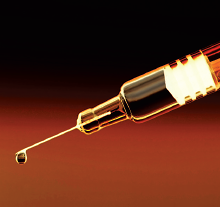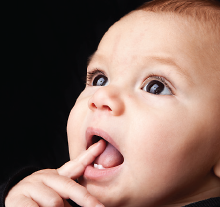Journal Digest
LAI Aripiprazole Found to Carry Lower Risks of Sexual Dysfunction Than Paliperidone

A secondary analysis of a large clinical study comparing the long-acting injectable (LAI) antipsychotics aripiprazole and paliperidone palmitate suggests patients taking LAI aripiprazole are at a lower risk of sexual dysfunction.
The findings, which are part of the open-label QUALIFY (Quality of Life with Abilify Maintena) study, were published March 1 in International Clinical Psychopharmacology.
The study included 148 patients taking aripiprazole and 147 taking paliperidone for 28 weeks. At the end of the trial, 38 percent of all patients in the aripiprazole group reported sexual dysfunction compared with 63 percent of the paliperidone group.
Among patients aged 35 or younger, the reported rates were 16 percent and 70 percent for aripiprazole and paliperidone palmitate; rates of sexual dysfunction were lower for the aripiprazole group among older adults as well, but the difference was not statistically significant.
Participants in the aripiprazole group also had much lower levels of the hormone prolactin, which is considered an influencing factor in the development of sexual problems in people taking antipsychotics.
The authors noted several limitations of the analyses, including the fact the trial was an open-label study, which could have resulted in uncontrolled baseline differences between the groups, and that sexual dysfunction was measured using patient ratings.
Nevertheless, they wrote that the findings “highlight the importance of addressing sexual dysfunction to avoid potential nonadherence. … Prospective trials may help to inform the relative incidence of sexual dysfunction among different antipsychotics as well as the management of this important side effect.”
Potkin S, Loze J, Forray C, et al. Reduced Sexual Dysfunction With Aripiprazole Once-Monthly Versus Paliperidone Palmitate: Results From QUALIFY. Int Clin Psychopharmacol. March 1, 2017. [Epub ahead of print]
Maternal Depression May Increase Risk of Behavioral Issues in Preschoolers

While perinatal depression can be detrimental to both mothers and children, a study appearing in Journal of Child Psychology and Psychiatry suggests that preschool-aged children may be most likely to experience behavioral issues if their mothers are experiencing depression.
Researchers at the Norwegian Institute of Public Health employed sibling comparison in their analysis of 11,599 families (including 17,830 siblings) who were part of the Norwegian Mother and Child Cohort Study. Sibling comparison is a means to rule out other potential explanations for an association since siblings share genetic and environmental risks, but may differ in their exposure to maternal depression.
The mothers in this cohort had their depressive symptoms measured twice during pregnancy (gestational weeks 17 and 30) and four times after delivery (six months, 18 months, three years, and five years). During the last three visits, the researchers asked mothers to assess internalizing and externalizing problems in their children.
Using standard modeling approaches, the study authors found that maternal depression at any timepoint was associated with increased risk of behavioral problems in children. However, when assessing risks among child siblings, the authors found that children whose mothers were experiencing depression had the most behavioral problems.
The authors also found that the risks of behavioral problems were greatest in older children. They concluded that “these findings advocate an increased focus on screening and treatment of maternal depressive symptoms during preschool years.”
Gjerde L, Eilertsen E, Reichborn-Kjennerud T, et al. Maternal Perinatal and Concurrent Depressive Symptoms and Child Behavior Problems: A Sibling Comparison Study. J Child Psychol Psychiatry. February 23, 2017. [Epub ahead of print] http://onlinelibrary.wiley.com/doi/10.1111/jcpp.12704/abstract
Testosterone Therapy Fails to Improve Cognitive Function

A placebo-controlled trial of older men with low testosterone and age-associated memory impairment has found no evidence that testosterone therapy improves cognitive function.
This analysis was part of the Testosterone Trials (TTrials), a set of seven connected clinical studies testing the effects of testosterone supplementation on physical health, cognitive health, sexual health, and mood. The findings were published February 21 in JAMA.
A total of 493 men aged 65 and older were assigned to take either testosterone gel or placebo for one year. A variety of cognitive tests was administered to the participants at the beginning of the trial and again six and 12 months later. These tests assessed recall memory (which was the primary outcome), visual memory, executive function, and spatial ability.
Though the men taking testosterone experienced an increase in circulating testosterone to levels typical of younger men, they did not differ from men in the placebo group in recall ability or other cognitive measures assessed during the trial.
Because participants in the TTrials had low testosterone due to aging, the study authors noted it is possible that testosterone therapy may provide benefits to men with more severe deficiency due to testicular or pituitary disease.
Resnick S, Matsumoto A, Stephens-Shields A, et al. Testosterone Treatment and Cognitive Function in Older Men With Low Testosterone and Age-Associated Memory Impairment. JAMA. 2017; 317(7):717-727.
First Genomewide Analysis of Loneliness Conducted

A team led by researchers at the University of Chicago carried out the first genomewide association study (GWAS) for loneliness, a complex trait that is associated with many adverse physical and mental health outcomes.
The findings were published in the March issue of the journal Neuropsychopharmacology.
The GWAS, which encompassed samples from 10,760 individuals aged 50 and older, revealed that loneliness is a modestly heritable trait that is determined by numerous common genetic variants. Overall, these common variations explain somewhere between 14 to 27 percent of all the possible contributors to a person’s loneliness.
No individual genes—including those that had been identified as candidates in smaller-scale genetic studies—reached any level of significance.
The researchers also checked whether people with these genetic variants for loneliness had variants associated with other personality traits. They found that the strongest correlation was between loneliness and neuroticism, with additional weaker associations for co-heritability with extraversion and a range of depressive symptoms.
“We believe future studies of loneliness, as well as additional studies of other social neuroscience phenotypes, may continue to enrich our understanding of the ways in which our genetic inheritance fundamentally influences individual and social behavior,” the authors concluded.
Gao J, Davis L, Hart A, et al. Genome-Wide Association Study of Loneliness Demonstrates a Role for Common Variation. Neuropsychopharmacology.
People With OCD Have Impaired Safety Signals in Ventromedial Prefrontal Cortex

Evaluating potentially threatening stimuli and determining they are safe is an important aspect of everyday life that often proves challenging to people with obsessive-compulsive disorder (OCD).
A study published in the Proceedings of the National Academy of Sciences employed neuroimaging to visualize this process of fear reversal in OCD patients and identified defects in signaling from the brain’s ventromedial prefrontal cortex (vmPFC).
A research team in the United Kingdom conducted Pavlovian fear reversal on 43 OCD patients and 35 controls while imaging their brains. The fear reversal involves showing participants two images and associating one with an electric shock; halfway through the test, the shock-related image is switched, forcing the participant to reverse their learned fear.
While the OCD patients learned to differentiate the threatening and safe images in the first part of the test similar to controls, they failed to differentiate a safe from threatening stimulus after the reversal, which the authors said was due to a lack of vmPFC safety signaling.
“Our findings indicate that a maladaptive vmPFC combined with increased connectivity with areas involved in salience processing undermines accurate safety learning in OCD patients, resulting in inflexible threat beliefs,” the authors wrote. “Further research into safety learning could help in the development of novel exposure-based therapies.”
Apergis-Schoute A, Gillan C, Fineberg N, et al. Neural Basis of Impaired Safety Signaling in Obsessive Compulsive Disorder. Proc Natl Acad Sci USA. March 6, 2017. [Epub ahead of print]
Early Tooth Eruption May Be Marker For Some Cases of Autism

Premature tooth eruption in infants may be an early marker for some cases of autism spectrum disorder (ASD), according to a report in Translational Psychiatry.
The study focused on children with activity-dependent neuroprotective protein (ANDP) mutations, a mutation believed to cause the developmental disorder ANDP syndrome. Though ADNP syndrome is rare overall, it is one of the most common types of non-inherited ASD.
The researchers assessed 54 children with ANDP syndrome and found that 44 had almost fully erupted baby teeth, including molars at 12 months of age. According to the American Dental Association, most children display only incisors at 12 months.
Follow-up genetic analysis in mice confirmed that dysfunction of the ANDP gene also resulted in alterations in tooth formation in the animals. The tests also revealed that the ANDP gene interacts with other genes involved in bone and tooth development.
“Our findings identifying early deciduous teething as a noninvasive simple diagnostic measure of ADNP mutation will support targeted sequencing to pinpoint the mutation at an early phase of life,” the authors wrote. ■
Gozes I, Van Dijck A, Hacohen-Kleiman G, et al. Premature Primary Tooth Eruption in Cog-nitive/Motor-Delayed ADNP-Mutated Children. Transl Psychiatry.



